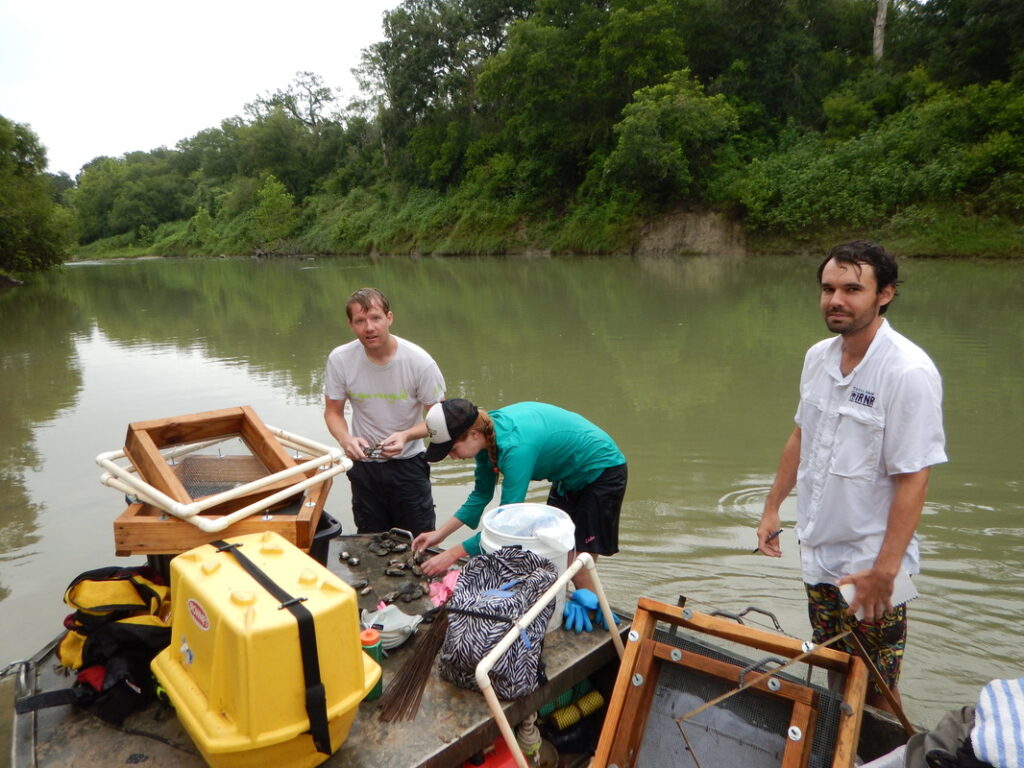
The need for data
Geographic patterns of mussel species distributions, combined with information on the factors that contributed to their endangerment, are necessary for developing effective conservation strategies. For freshwater mussels, specifically those occurring in Texas, distribution information is available, but only at a broad scale, and much of it is based on shell material rather than live individuals. Information on the location of mussel populations and the viability of those populations is all but non-existent, although this problem is not unique to Texas. Studies by TPWD and more recently by university researchers over the last 5 to 10 years have begun to address these knowledge gaps, however, given the geographical size of Texas (172 million acres) combined with the fact that most of this land area is privately owned (over 140 million acres) means that many rivers and streams have yet to be surveyed for rare or common mussel species.
Our Methods
In our research group, we use a combination of sampling techniques, which include qualitative and quantitative sampling in wadeable and non-wadeable settings. Depending on the level of turbidity, we use either visual or handpicking (i.e., grubbing) techniques to locate live mussels. Once live mussels are found, they are identified to species, checked for gravidity (i.e., reproductively active), and we measure their total length, which can be used to assess recruitment. Most of our survey work is focused on assessing presence/absence for species of concern (which may include state or federally listed), evaluating reproduction and growth, and assessing changes in assemblage structure in response to anthropogenic impacts. We also combine survey data with in-stream flow and habitat measurements during periods of low and high river discharge to determine habitat use and identify factors that may impact mussel persistence. These data, along with those collected for fish and insects, are then used to inform environmental flow recommendations.
Where we’re working
We have ongoing surveys in the Rio Grande, Devils, San Saba, Guadalupe, Trinity, San Gabriel and Little rivers. The goal of these surveys is to address knowledge gaps regarding the distribution and conservation status for species of concern that are known to have inhabited these rivers. The information derived from these surveys will be given to TPWD and USFWS to support listing efforts, ongoing conservation activities, and restoration projects.

